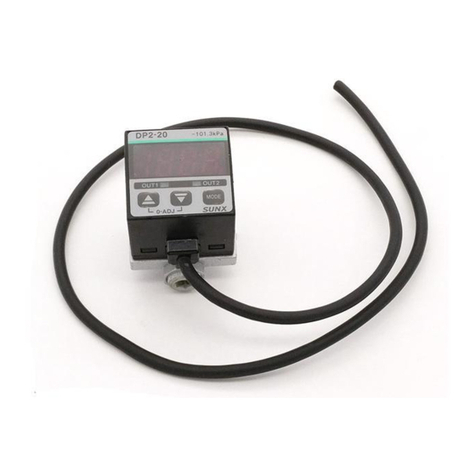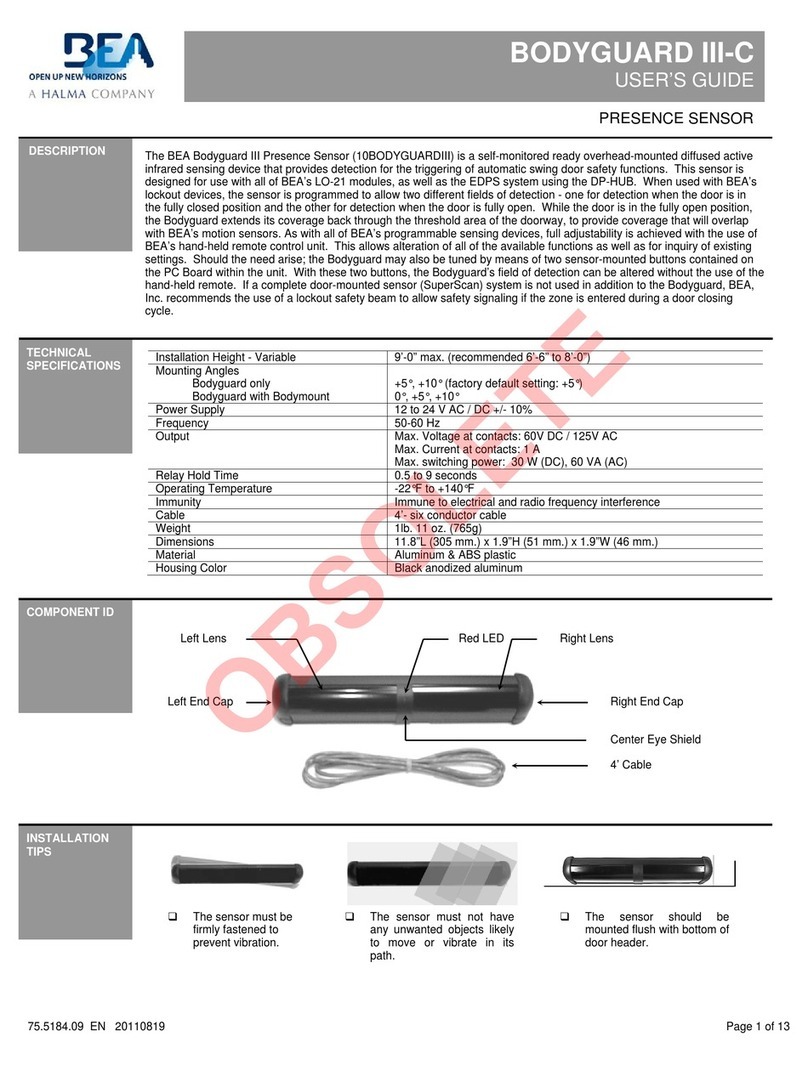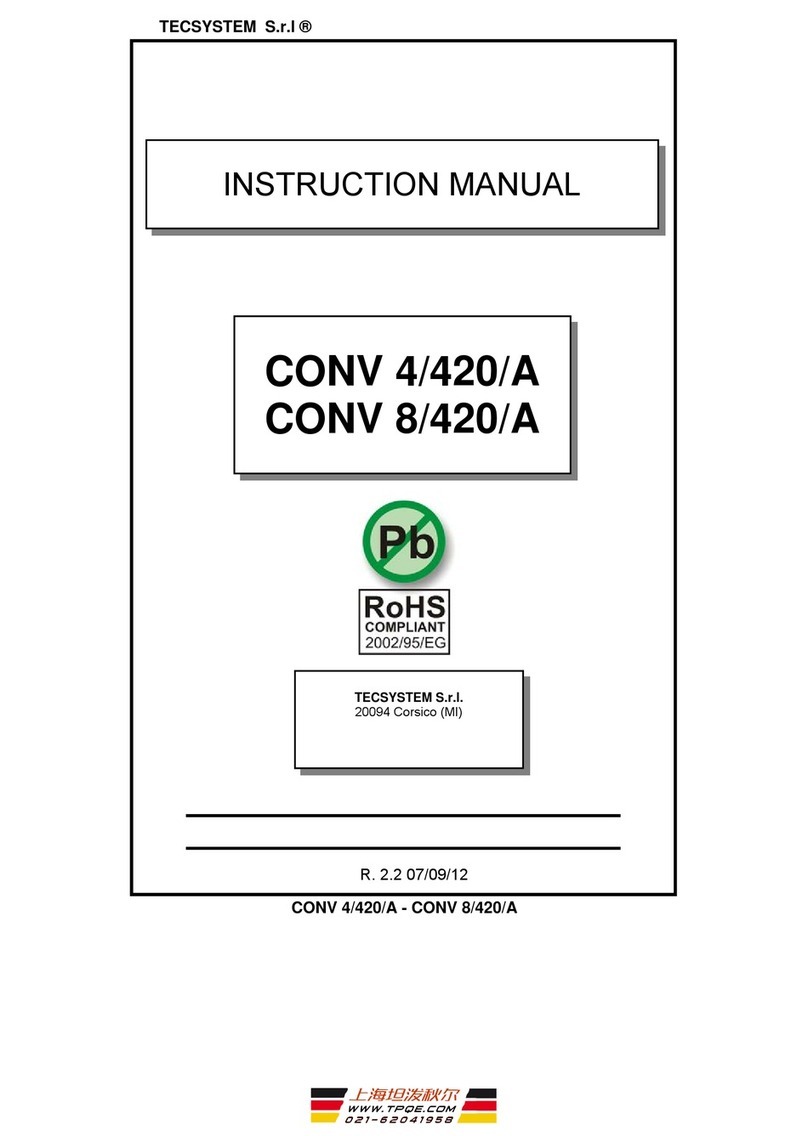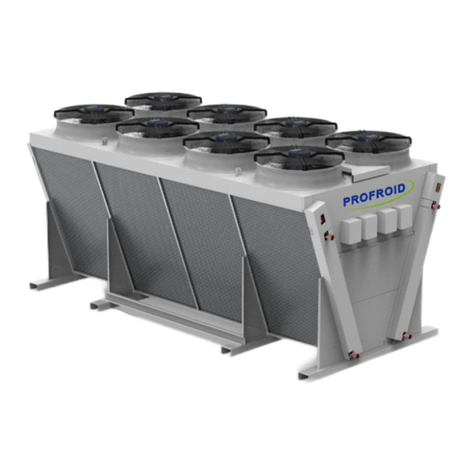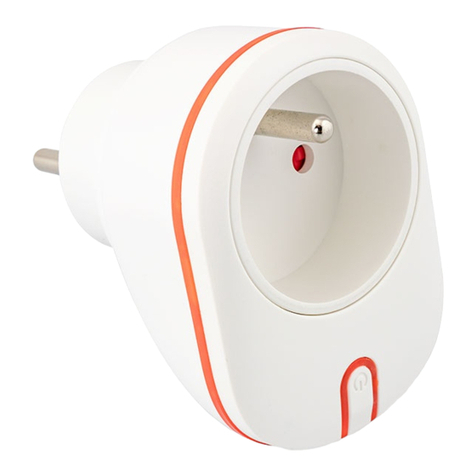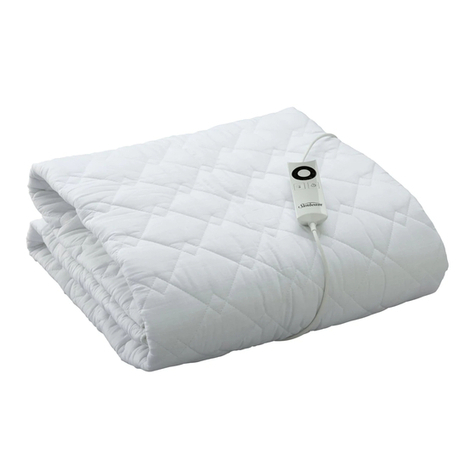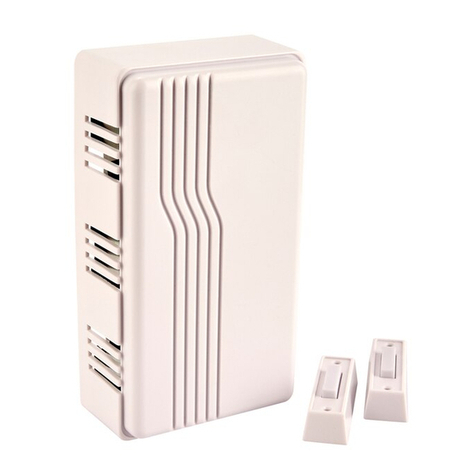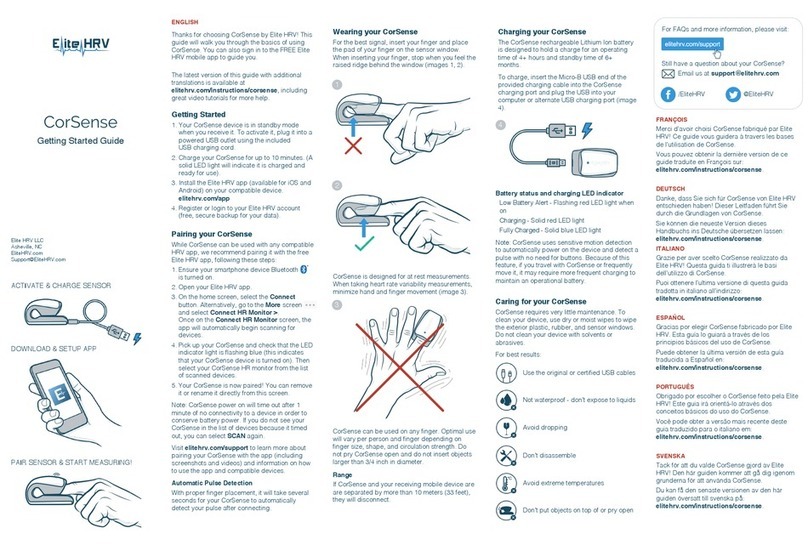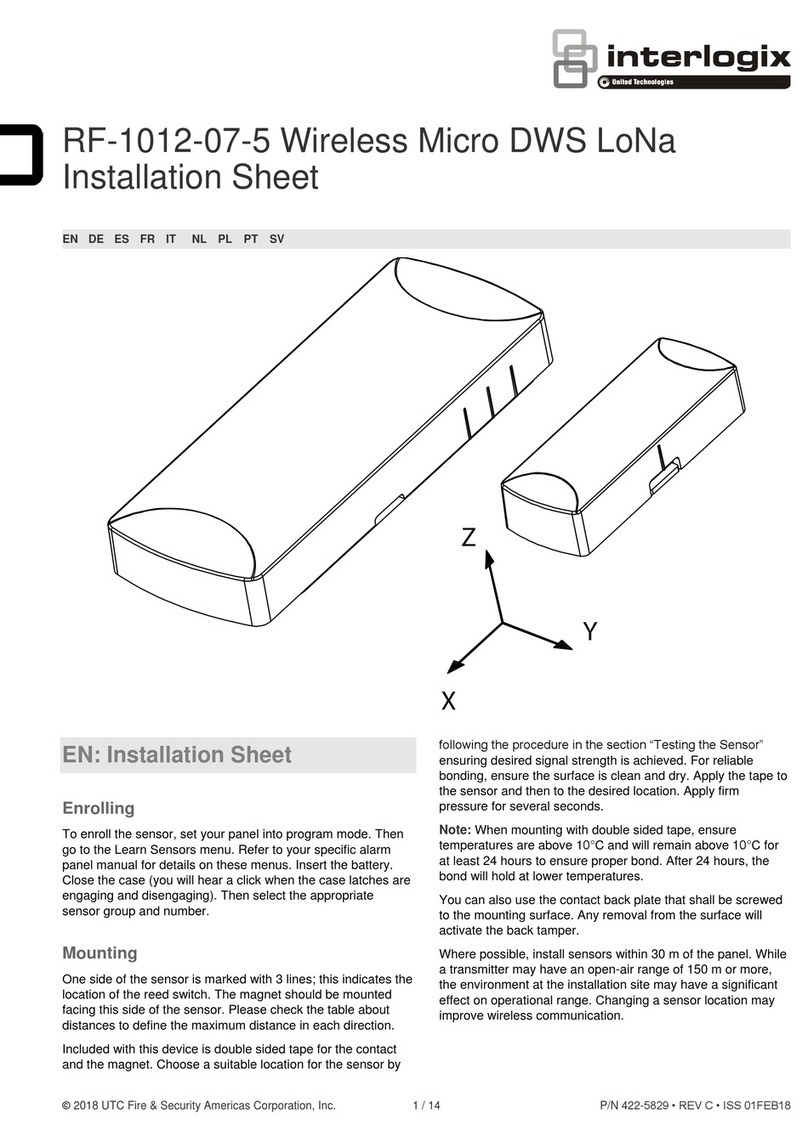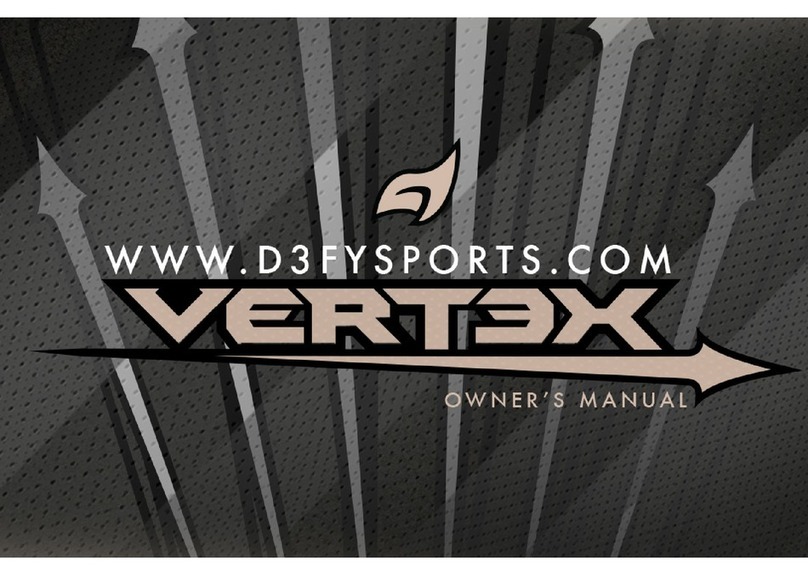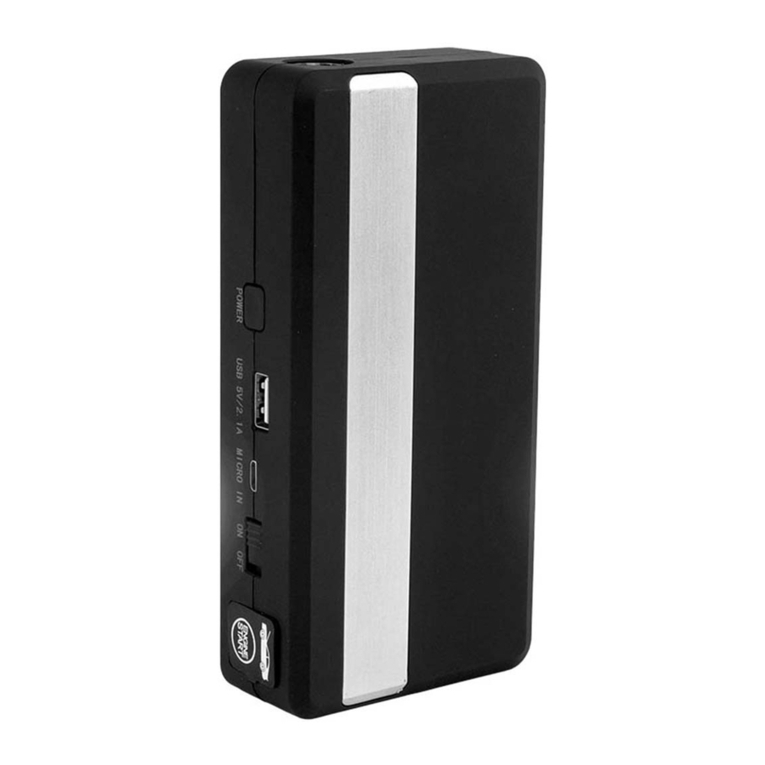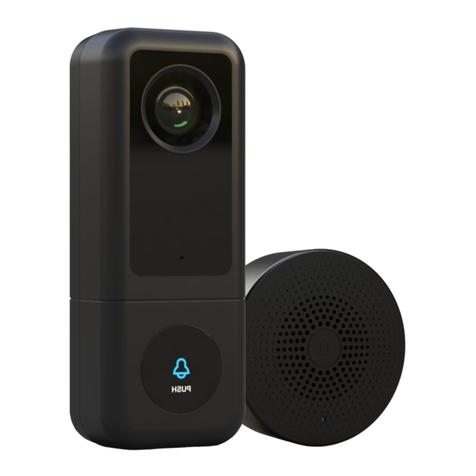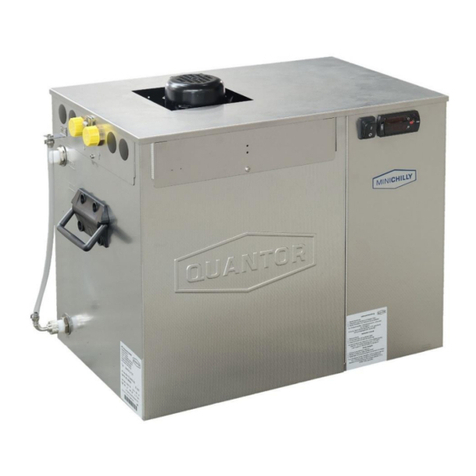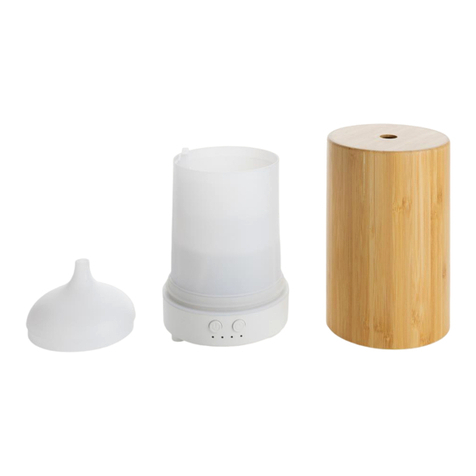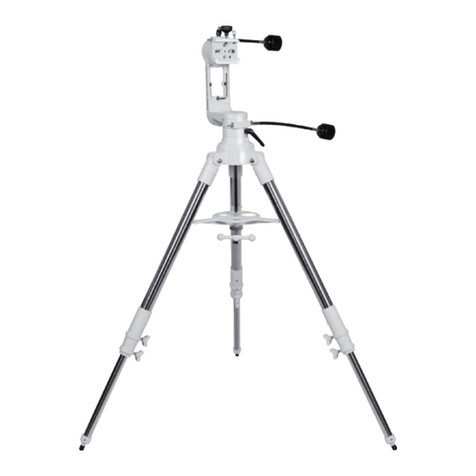Tessier Snow'Kart Instructions for use

Instruction and maintenance manual
www.dualski.com

2
SUMMARY
1 PRESENTATION AND USE ADVISES ....................................................................... 3
1.1 General presentation................................................................................................... 3
1.2 Recommandations..............................................................Erreur ! Signet non défini.
1.3 Skis choice .................................................................................................................. 4
1.4 Bindings choice...................................................................Erreur ! Signet non défini.
1.5 Mounting the bindings on the skis.......................................Erreur ! Signet non défini.
2 GLOBAL DESCRIPTION ............................................................................................ 5
2.1 Global view of the Snow’Kart....................................................................................... 5
2.2 levers nozzles and Easydrive kit.................................................................................. 8
3 SKI LIFTS USE ........................................................ERREUR ! SIGNET NON DEFINI.
3.1 Draglift use .................................................................................................................. 9
3.1.1 Descriptive of the different draglift harness............................................................ 9
3.1.2 Method for draglift use..........................................................................................11
3.1.3 Safety anti-reverse brake .....................................................................................12
3.1.4 Mounting of the draglift harness on the Snow’Kart................................................12
3.2 Chairlift use.........................................................................Erreur ! Signet non défini.
4 TECHNIQUES EXPLANATIONS, MANIPULATIONS AND SETTINGS.....................15
4.1 Seats..................................................................................Erreur ! Signet non défini.
4.2 Footrest......................................................................................................................15
4.3 Manipulation of the ski position lock............................................................................16
4.4 Replacement of the levers nozzles .............................................................................16
4.5 Protection cover..................................................................Erreur ! Signet non défini.
4.6 Assistance bar............................................................................................................17
4.7 Adjustment of the teeth brake.............................................Erreur ! Signet non défini.
5 USE TECHNIC ...........................................................................................................18
5.1 Advises for the accompanist.......................................................................................18
5.2 Skiing in Snow’Kart.....................................................................................................18
5.3 Skiing in Snow’Kart with the Easydrive kit...................................................................19
6 MAINTENANCE.........................................................................................................20
7 WARRANTY.............................................................ERREUR ! SIGNET NON DEFINI.
8 VERTICAL EVACUATION OF THE SNOW’KART.....................................................22
This manual concerns the Snow’Kart from N° SK001 à SK021
Manual version N° MSK01-20151115
Design, manufacturing, marketing & after-sale services by:
TESSIER SARL
Z.I. François Horteur
73660 Saint Rémy de Maurienne – France
Tel. +33 (0) 479.83.51.52 Fax. +33 (0) 479.83.51.53

3
1 PRESENTATION AND USE ADVISES
1.1 General presentation
The Snow’Kart is intended to people who want to ski independently, who can use their upper
limbs but who don’t have enough strength or balance to ski in Uniski or Dualski.
The Snow’Kart is a brand new model which replaces the Kartski from the season 2015 – 2016.
The main improvements compared to the Kartski are:
- Easier chairlift use thanks to a locking system in high position, and a standardization of the
rising mechanism with the Tandem’Flex
®
and the Tempo
®
to allow the users to find the same
operation on all these equipment.
- Easier, smoother, more stable and more efficient thanks to the modification of the edging
angle, a new weights repartition and an efficient break system.
- More versatile thanks to the interchangeable levers which allow adapting easily the
Snow’Kart for children and people who could only use one hand.
- More compact for the transport thanks to the removable assistance bar.
In France, the Snow’Kart received the approval N° AVMH_793_15_A delivered by “the
commission of the sitski equipment”, presided by the STRMTG (French Ministry of Transport).
On each Snow’Kart there is an identification plate with the serial number of the equipment and
the approval number.
Full independence with a person
with Cerebral Palsy.
Equipped here with an articulated
bucket seat.
With the assistance of an accompanist

4
1.2 Recommendations
The goal of the following explanation is not to train the user for the use of the Snow’Kart but to
give some elementary advices for the use of this equipment.
For a quick and safe improvement, on slopes and lifts, we highly recommend to learn with an
instructor who knows well this equipment. The difficulties of the used slopes and lifts should
be chosen in function of the capacities of the skier in Snow’Kart and the abilities of his
accompanist.
The sit skier in Snow’Kart should always be accompanied with an accompanist skier. It is
essential, in particular during the training, that the accompanist must be linked to the Snow’Kart
with a safety rope and a belt around his waist. When the sitskier handles correctly the
Snow’Kart and if the slope allows it, the accompanist can detach the rope and put it around
the assistance bar. The accompanist is indispensable for the use of the lifts and to move the
Snow’Kart on flat. Attention, it is imperative that the rope do not drag to avoid it to be trapped
in the chairlift seat.
The performance and the safety of the Snow’Kart depend of its state. It is important to keep it
in good condition and to look at these following points:
•Take care of your equipment and be attentive about any dysfunction to fix it quickly.
•Respect the original mount of the parts when repairing. Contact us if needed.
•Check the condition of the skis and maintain them with a specialist.
The skier safety depends of his ability level, his caution and his protection. It is import to stay
attentive of these following points:
•Respect the 10 FIS rules about the skier attitude and keep a safety margin.
•Stay attentive when taking the lifts.
•It is essential to wear a helmet.
1.3 Skis choice
Recommended length: between 155 cm and 175 cm
.
1.4 Bindings choice
The maximum strength adjustment to use depends of the weight and the level of the skier. The
binding should not release. For every use, the maximum tighten strength is recommended.
- « standard » bindings: minimum adjustment of 14 DIN.
- « pivot » type bindings:minimum adjustment of 12DIN. (This type of bindings
resists well punctual overloads)
It is imperative to keep the anti-release plates in the front of the foot piece
because the efforts on the front of the binding are important.
1.5 Mounting of the bindings on the skis
The length of the foot piece is 325 mm.
The mounting is done like a normal boot of the same length: the middle of the
foot piece has to be centered with the ski mark.

5
2 GLOBAL DESCRIPTION
2.1 Global view of the Snow’Kart
Global view of the Snow’Kart
The frame is compatible with all
the TESSIER seats (except the
Grand Confort bucket seat)
The Snow’Kart is delivered in series with an
assistance bar.
Three kinds of levers are
available: Adult, Children
or Easydrive, see
paragraph
Foot rest adjustable in
length.
Rising system assisted by a strong gas jack and
a high position locking system.

6
1A
A
1B
1C
2
Snow’Kart in chairlift position
Snow’Kart in slope position
3 4
5
6
7
8
9
10
12
14
17

7
Repère
Désignation
Quantité
1A Upper frame 1
1B Assistance bar 1
1C Hook attachment of the safety leash
(welded on the assistance bar) 1
2 Lower frame 1
3 Upper arm 1
4 Lower arm 2
5 Lock for chairlifts use 1
6 Tooth brake 2
7 Rubber cushion for shocks absorption 1
8 Lever nozzle 2
9 Lever 2
10 Footrest 1
11 Inclination blocking system of the right ski 1
12 Helping gas jack for the rise at chairlift 1
13 Anti-reverse brake 1
14 Hook attachment of the draglift harness(welded on the upperframe)
2
15 Aluminum foot piece 2
16 Standard ski + binding 2
17 Seat in composite materials 1
Nomenclature of the main pieces of the Snow’Kart
11
13
15
16

8
2.2 Levers nozzle and Easydrive kit
Three options are available and easily interchangeable:
Adults levers Easydrive kit (option) Children levers (option)
Mounted in series on the
Snow’Kart. Allow the piloting of the
Snow’Kart with only one
hand. Adjustable on 3
positions to set the skis
angle in snowplow position
in function of the steep.
The adjustment is done
with a locker. To allow the
rising to take the chairlift,
the bar could be
disconnected in 2 parts.
Thanks to their curved
shape, it reduces the
distance between the hands
for smaller people.
Different options available on the Snow’Kart
Most tight adjustment Intermediate adjustment Most opened adjustment
Easydrive kit configurations

9
3 SKI LIFT USE
In France, the Snow’Kart received the homologation number N° AVMH_793_15_A for the use
of the chairlifts and draglifts. The “TESSIER drag lift system” has received the homologation
number N° AVMH 734_99_C. These notices are delivered by the “sitski equipment
commission” presided by the STRMTG (division of the French Ministry of Transport,
Equipment, Tourism and Sea). They are available on request to TESSIER.The French Disable
Federation has realized a settlement for sit skiing.
Those following practical advises can’t substitute the homologation notice.
3.1 DRAGLIFTS USE
3.1.1 Descriptive of the different draglift harness
Since 2012, TESSIER offers 3 types of draglift harnesses:
- The “standard” harness with rubber part for Poma-lifts. Also suitable for T-bar lifts.
- The “T-bar” harness, simpler, for T-bar lifts. In France it’s homologated only for T-bars and
it’s not allowed on Poma-lifts.
- The “T-bar + rubber part” harness, for all kind of draglifts.
The concept is the same for these 3 draglift harnesses:
- The main release: a pull of the main string opens the karabiner and release the rubber part
or the strap (depending of the harness).
- A safety release: a pull of the string hold in the other hand release the harness from the
pole. This release is use in case of problem with the main release or loss of the other string.
Explanations according to the description on page 10
«Standard» harness
The string of the main release (4) opens the rubber part (1). It mustn’t be attached to a hand
but only hold between the hand and the outrigger handle because it goes with the rubber part
in case of use of the safety release.
The safety string (5) must be put around the wrist and kept against the outrigger handle like a
wrist-strap.
T-bar harness
The strap (2) goes around the T-bar close to the pole.
Strings are hold like wrist-straps on each hand (6). One string is used as main release and the
other one (6) as the safety release.
T-bar + rubber part harness
The use is close to the « standard » harness’ one.
The main string (4) opens the rubber part (1). The string (5) is used as the safety release.

10
1
– Rubber part. It has a “slip knot” for an optimal grip on the Poma-lifts.
1A
– illustration with “slip
knot” tighten on the disc. 1B – plastic loop for the adjustment of the rubber part. 1C – attachment
karabiner of the rubber part.
2– Strap. For a simple and efficient hanging on T-bars. The rubber part can also be attached to this
strap (harness for T-bar + rubber part). We don’t recommend the use on Poma-lifts.
3– String and karabiner to attach the harness to the frame. See chapter 3.3.4.
4– Main safety release string. 4A – knot to place under the hand.
5– Safety release string. Hold it on the grip like a hand strap pole. For the T-bar + rubber part
harness, the rope (6) is useless and should be stored between the legs.
7– Release safety karabiner
1
1
1A
2
3
3
4
4
4A
4A
5
5
5
5
3
7
7
7
7
7
6
1B
1B
1C
1C
Standard draglift
harness
T
-
bar + rubber part
draglift harness
T
-
bar draglift harness

11
3.1.2 Method for draglift use
General:
- The sitskier must have the data
sheet with him to attest of its
conformity.
- It is compulsory that a helper goes
up first and is in a position of
stopping the ski-lift, using the
emergency button, in the event of a
malfunction of the harness system.
This is a condition of the
authorization’s validity.
- First, the sitskier or his
accompanistopensthe safety brake
system placed under the Snow’Kart to make it operational and check that it works.
For « standard » or « T-bar + rubber part » draglift harnesses:
- The skier must have already prepared his harness before arriving to the ski-lift attendant. The
rubber ring of the harness must be closed. A plastic adjustment enables the arch of the ring to
be adjusted. This arch must be closed to the maximum and should just allow the seat of the
pole to pass.
- The ski-lift attendant must use the manual departing method for the pole.
- He passes the seat of the perch through the ring.
- At the moment of departing, the ski-lift attendant must position the ring on the seat of
the pole and maintain the pole steadfastly at the front of it. This enables the « slip-knot »
of the harness to work instantaneously.
- The rope of the main hook release should not be attached to the hand but simply held
between the hand and the Snow’Kart lever, as it leaves with the ring in the event of the safety
hook release.
- The rope of the safety karabiner has to be around the wrist and maintained of the Snow’Kart
grip like a pole hand strap.
- With the draglift harness « T-bar + rubber part », there are 2 safety ropes, one is useless and
should be put between the legs or in the leg cover.
- Once at the top of the ski lift, the skier releases his harness with the main releaser (rubber
part aperture) and go a bit further to pack it.
For « T-bar » draglift harness:
- The rubber part is not used, the strap is enough.
- The skier must have already prepared his harness before arriving to the ski-lift
attendant.
- The 2 release ropes of each karabiner have to be put around the wrists and maintained on
the Snow’Kart grips like pole hand straps.
- It’s not necessary to stop the draglift; the attendant has to put the strap as closer as possible
of the center on one of the sides of the T-bar.
- Once at the top of the draglift, the skier releases his harness with one of the 2 ropes and go
a bit further to pack it.

12
3.1.3 Safety anti reverse brake
For more safety, an anti-reverse safety brake allows to stop the Snow’Kart on the draglift slope
in case of an untimely release of the draglift harness.
It is compulsory that this brake has to be active during the use of the draglift and may
be deactivated with a beta pin when the draglift is not used.
Pin for locking/unlocking the anti-reverse safety brake
3.1.4 Mounting of the draglift harness
on the Snow’Kart
The mounting is the same whatever the kind of
draglift used.
1- Hang the 2 karabiners on the 2 rings on the
frame (1). It is necessary to remove one of the
karabiners to settle in the seat.
2- Attention: always put the rope inside the
strap for the backrest adjustment (2).
1
2

13
3.2 Chairlift use
Compared to the KARTSKI, the addition of a locking mechanism in high position on the
Snow’Kart makes easier the chairlifts use.
Those following practical advises can’t substitute the homologation notice:
Prior to take the chairlift, inform the chairlift personnel of your presence. They will be vigilant
and will use the emergency button in the event of an incident.
Systematically ask to get on at a slow speed, even requesting that it stops if the chairlift
only has 2 places or is unable to go slowly. The speed for unloading the chairlift mustn’t be
higher than the speed for loading.
Before getting ready to load, unlock the frame to put it in high position.
Lock the right ski in order to avoid it to lean during the rise. The accompanist is on the
left, so he has no access to this lever during the rise.
Attention, in this locked position, an effort on the lever (a fall for example) could
twist it.
Locking system of the right ski: Free ski (left picture), locked ski (right picture)
Release the backrest strap of the Snow’Kart in order to keep a comfortable and safe
seating on the chairlift.
The skier accompanist is installed on the left of the Snow’Kart and could hold the left grip
to direct the equipment.
If the Easydrive kit is used,
disconnect the link bar in 2 parts to
allow raising the frame and
avoiding to the skier to be stuck by
it.
In the loading area, position
oneself as follow:
o
For a chairlift with 2 places: on one of the 2 places.
o
For a chairlift with 3 places: on the middle place.
o
For a chairlift with 4 places or more: on one of the middle places. The footrest bars of
the seat’s safety rail are mainly positioned every 2 places. In any event, do not position
the Snow’Kart between 2 places where the footrests of the seat’s safety rail are likely
to obstruct. This should be imperatively entirely folded down.
The accompanist raise the Snow’Kart, helped by the assistance gas jack and eventually
by the sitskier who push on the grips.

14
When the Snow’Kart is in high position, pull on the locking rope and let the frame goes
down on the block while keeping the rope pulled. Once it locked, release the rope.
Locking system in high position common to the Snow’Kart, Tandem’Flex and Tempo
When the Snow’Kart enter in contact with the bench of the chairlift, pull lightly forward by
the top of the assistance bar to unlock the block.
Load by sliding the Snow’Kart to the maximum to the back of the seat when the lift takes
away the Snow’Kart in the emptiness. To facilitate this maneuver, do a lateral translation
movement with the right hand on the assistance bar and the left hand on the front of the
seat.
Always make sure that the Snow’Kart is sit to the maximum backward.
Close the safety bar as soon as possible.
Before the arrival, make sure that the safety bar could be easily opened.
Open the safety bar just before unloading.
The accompanist push the Snow’Kart out of the lift, his back against the chairlift backrest,
stand himself and clear the unloading area as quickly as possible.
Before going again on slope, think to lock the frame in ski position, unlock the right ski
and tighten the backrest strap.
Loading in the locked high position

15
4 TECHNICAL EXPLANATIONS, MANIPULATIONS
AND SETTINGS
4.1 Seats
The following TESSIER seats are compatibles with the Snow’Kart:
Articulated seat
Children size to size 6 (7 sizes)
Different width and backrest heights are available to be
adjusted to the morphology and disability of the skier.
Articulated bucket seat
Unique size
(equivalent to size 5)
The seats are equipped with 2 kinds of foam:
Full waterproof foam stuck around the seat and
the backrest.
In the bottom of the seat, a removable and
comfortable memory shape foam which will be
harder in the cold but softer when the skier is sit
on it. It could be packed into the seat but will
take the original shape if we remove it to a
warmer place. It could be good to remove it to
make it dry.
During the settlement, tighten correctly all the
straps. The hips straps should goes under the
jacket to be efficient. For the backrest of the
articulated bucket seat, tighten first the horizontal
straps then the shoulder straps.
4.2 Footrest
1) Height adjustment: with a 13 spanner, loosen the 2
screws (A) and adjust the height to get a space of one
finger between the foam of the seat and the thigh in the
front of the seat. Tighten again these 2 screws (tightening
torque 10 Nm). The footrest could be raised up to 13 cm
from the end of the frame to the surface where the feet are
pressing.
2) Depth adjustment of the feet on the footrest: adjust the
strap (B) with the 2 buckles (C) to make the feet pressing
in their middle on the footrest.
3) Maintaining the feet: tighten the strap (D) on the feet.
Tighten also over the leg cover if it’s used.
A
C
D
REAR VIEW
B
Assembly of the seat
on the frame
Screw it tight (18Nm)
2 Screws TBHC
8x55 in front
2 Screws TBHC
8x45 in back
1 flat washer large
Seat
Frame
1 Washer conical
and striped
1 Nut stop
(Nylstop)

16
4.3 Manipulation of the ski position lock
Pull on the lever to the outside and turn it up to release from ski position and rise up the
Snow’Kart in chairlift position.
Attention: to make it possible it asks to have a minimum of weight in the seat, because
the gas jack which helps to rise up in chairlift position, block the lock. It is enough to push
on the seat to add more weight and unlock it.
4.4 Replacement of the levers nozzles
The different lever nozzles « Adult » (1), « Children »
and « Easydrive kit » slot each other on the sleeves
(2) at the end of the levers.
The replacement is doneby unscrewing the screw and
the nut (3) with 2 spanners 10. Tighten correctly
(tightening torque 9 Nm).
For the Easydrive kit, the rubber grip can be mounted
on right or left according to the sitskier’s ability.
4.5 Protection cover
The leg cover is the most common with the Snow’Kart. It
protects from the wind and snow projection. Its wide pocket
allows storing the draglift system for example.
It is attached:
•In the middle, with 2 Velcro straps which goes behind the
footrest tubes.
•At the top, with the seat strap over the knees.
•At the bottom, with the feet strap.
It is also possible to use the UTY warm cover.
1
3
2

17
4.6 Assistance bar
The Snow’Kart is delivered in series with a specific assistance
bar. We highly recommend to the accompanist to be linked to
the assistance bar with a safety leash and a belt around the
waist until the skier doesn’t have a good control of the
Snow’Kart.
This safety leash (rope) is attached at the top of the assistance
bar. The accompanist has to be always upstream or inside the
turn to be able to reestablish easily the Snow’Kart balance.
The bar is also very useful to push the Snow’Kart o take the
chairlift.
4.7 Adjustment of the teeth brake
Disassembly:
1. Remove the nut with a spanner 10.
2. Remove the flap and 2 washers from
the screw (1 on each side).
3. Disassembly the 2 screws + nuts which
tight the tooth brake with 2 spanners
10.
Rewinding:
1. Adjust the tooth brake at the desire
height.
2. Put again the 2 screws + nuts by
tightening correctly (torque 10 Nm)
3. Put again the flap with 1 washer on
each side.
4. Put again the nut and tight gently to do
not cut the flap.
The bar is mounted at the rear of
the frame and attached as shown
under.
Screws on each sides
:
1 Nut stop (Nylstop)
2 Washer conical and striped
1 Screw TH 8x55
Tighten correctly with 2 spanners of 13
(torque 15 Nm)

18
5 USE TECHNIC
5.1 Advises for the accompanist
The accompanist must have a good ski level to accompany the Snow’Kart user.
It is not compulsory for the accompanist to be linked to the Snow’Kart with a safety leash.
However is it necessary until the sitskier have a full control of the Snow’Kart or if the
environment request it (steep slope, hazardous slope sides, etc.).
During the training the accompanist can slow the Snow’Kart but the sitskier should be able to
control his speed quickly by himself. The accompanist should be always present to help and
ensure the safety.
The accompanist is essential for the use of the lifts and to push the Snow’Kart on the flat for
example.
In skiing, the accompanist must be always behind and upstream or inside the turn because in
case of wrong action of the sitskier, he could avoid a flip over of the Snow’Kart by pulling on the
rope. This is why the safety leash is attached at the top of the bar.
5.2 Skiing in Snow’Kart
The skier should respect the recommendations from this manual in chapter 1.2.
The skier and his accompanist choose the slopes in function of their skills.
During the learning, it is fundamental to control his speed in function on his skills and never
make brutal movement on the levers.
The sitskier starts on a gentle slope and uses the “snowplow” technic. To do it, he makes
his hands closer and keeps them forward to avoid braking. He releases this snowplow
position to manage his speed.
To make a first turn, start from the snowplow position, open lightly the inside grip in the
direction where he wants to go and put the inside ski flat. The outside turn hand keep the
lever leaned to keep the ski on the edge. Once the turn is done, return lightly the spread
hand to the seat to avoid an overturn.
Attention: do not stay in snowplow in strait down the slope but evolve by turning and
crossing the slope.
When turning, the ski inside the turn should be flat or lightly on the inside edge but never
cross the outside edge. A stop avoids to open to much the ski on the outside edge.
A short turn is done with the inside ski flat on snow and the outside ski closed to the
maximum.
The skier will improve his technic to make the rounder turns possible.
To keep more speed, the skier could open his hands to put the skis flat. If the Snow’Kart
starts to “float”, the skier should put his hands in a light snowplow position to keep the
control of the Snow’Kart.
Two teeth brake are attached at the back of the levers and could be activated by pulling
back the levers. They’re adjustable in height if needed. At the beginning, it is advised to do
not use them to be concentrated on the edging work. Then, these brakes could be used in
steeper slopes to make the Snow’Kart turn shorter. Use them during the turn when you’re
strait down the slope.
The brakes can also be used to stop quickly.

19
5.3 Skiing in Snow’Kart with the Easydrive kit
The Easydrive kit is intended to people who can only use one hand but also to people who
don’t have enough strength or have coordination troubles of the upper limbs.
See description in chapter 2.2.
The Easydrive kit, offered in option, is mounted in replacement of the upper part of the
standard lever nozzles. It is composed of:
- The telescopic link bar (1) adjustable in length on 3 positions by a lock (2) which is
positioned to the front and one rubber grip (3).
- Two identical lever nozzles (4). When mounting them on the levers, it is possible to
choose the way to have the grip (3) on left or right in function of the skier’s ability.
In skiing, it is essential to adjust the length of the bar in function of the steep to allow the
skier to control his speed. It is necessary to stop to adjust the length of the bar.
The skier moves his hand left and right to choose his direction without making brutal
movement.
He make attention to not close to much his turns to avoid being perpendicular to the slope
to avoid overturning.
With the Easydrive kit the skier uses more frequently the brakes.
When taking the chairlift,
disconnect the 2 parts of the
link bar of the Easydrive kit in
order to allow rising up the frame
and do not block the skier.
1
2
3
4

20
6 MAINTENANCE
Our equipment’s are reputed to be reliable and it is a priority for us.
However, as all mechanical equipment, it is necessary to take care of it. Moreover in this
application, the mechanic is sometime submitted to extreme conditions. It is hard to establish
a precise maintenance map because the frequency of use and the solicitation level of the
equipment are very different from a user to another.
We recommend to bring us back or sending us the Snow’Kart for maintenance every 400 hours
of use.
Attention: if the return in our workshop is impossible, the maintenance must be done by
a mechanical professional. We stay at your disposal to communicate the necessary
technical advises.
Between the maintenance listed above, we recommend to maintain often the Snow’Kart by
following the table below:
Ope
ration
/ Frequency
Maintenance or repair solution
Store the Snow’Kart in adry place after each use.
Visual check before each use or after an impact.
Contact us if there is a problem.
Check the skis andthe bindings before each use.
Professional ski shop.
Check every articulation every 100 hours use or
after an impact. Contact us if there is a problem.
Check the frame and seat straps every 30 hours
use or after an impact. Contact us to before sending the straps.
Check the belt and the safety leash before every
use. Contact us for replacement.
When using the chairlift, the gas jack must help
enough to rise up the frame. If loose of strength, replace it, contact us.
Table of contents
Other Tessier Accessories manuals

